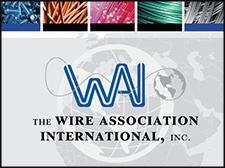What is a Servo System - Concise Introduction
Servo system (servomechanism), also known as follow-up system, is a feedback control system used to accurately follow or reproduce a certain process. The servo system is an automatic control system that enables the output controlled quantities such as the position, orientation, and state of the object to follow any changes in the input target (or given value). Its main job is to amplify, transform and regulate the power according to the requirements of the control command, so that the torque, speed and position control output by the drive device are very flexible and convenient.
The Meaning of Servo System
Servo is the abbreviation of ServoMechanism, which comes from Greece, and its meaning is slave. As the name suggests, it means that the system follows external instructions to perform the desired movement, and the movement elements include position, speed, torque and other quantities.
Servo system (servomechanism), also known as follow-up system, is a feedback control system used to accurately follow or reproduce a certain process. The servo system is an automatic control system that enables the output controlled quantities such as the position, orientation, and state of the object to follow any changes in the input target (or given value). Its main job is to amplify, transform and regulate the power according to the requirements of the control command, so that the torque, speed and position control output by the drive device are very flexible and convenient.
Main Function
1. Use low-power command signals to control high-power loads;
2. In the absence of mechanical connection, the input shaft controls the output shaft located far away to achieve long-distance synchronous transmission;
3. Enable the output mechanical displacement to accurately track electrical signals, such as recording and indicating instruments, etc.
The Main Structure
The servo system mainly consists of three parts: controller, power drive device, and electric motor (usually servo motor).
The controller adjusts the control amount according to the difference between the given value of the numerical control system and the actual operating value detected by the feedback device; the power drive device serves as the main loop of the system. On the one hand, it applies the electric energy in the power grid to the motor according to the size of the control amount. On the other hand, it adjusts the torque of the motor. On the other hand, it converts the constant voltage and constant frequency power supply from the grid into the alternating current or direct current required by the motor according to the requirements of the motor; the motor drives the machinery to operate according to the size of the power supply.
Servo system Control Method
Servo systems can use open-loop and closed-loop control, but closed-loop control is usually used.
Open-loop control system: It is a system control method without feedback information, and does not feed back the control results to affect the current controlled system. For example: turning on the light switch - the moment after pressing the switch, the control activity has ended, and whether the light is on or not has no impact on the activity of pressing the switch; shooting a basketball - once the basketball is released, it can no longer be controlled. Regardless of whether the ball is scored or not, the control activity ends the moment the ball is released.
Closed-loop control system: A system that can feed back control results to compare with desired values, and adjust control actions based on their errors. For example: Adjust the faucet - first have an expected flow rate for the water in your mind. After opening the faucet, observe the existing flow rate with your eyes to compare it with the expected value, and continuously adjust it with your hands to form a feedback closed-loop control; riding a bicycle - -Similarly, the direction and speed of travel are constantly corrected to form a closed-loop control.
Servo systems' Application
Servo systems are widely used in automated production lines, industrial robots, CNC machine tools, aerospace, medical equipment, optical equipment and other fields. Due to its high precision, high reliability and high performance, servo system has become one of the core technologies in the field of modern machinery manufacturing.
Featured Product

